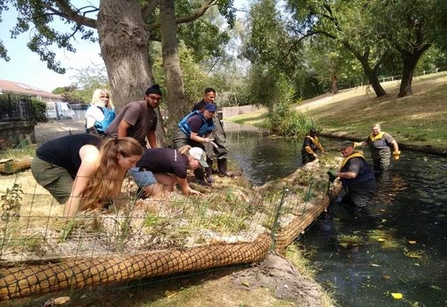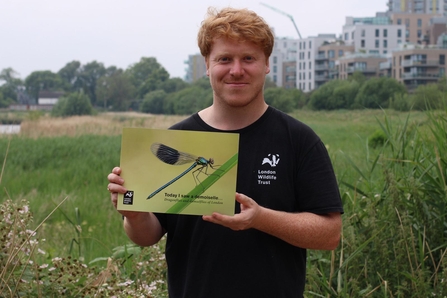
Banded demoiselle
Image by Iain Leach
Water for Wildlife
Water for Wildlife
London’s freshwater habitats have always been an important part of the city’s ecology and people’s enjoyment. However, many have been modified, damaged and built on to accommodate a growing population, placing further pressure on the wildlife that depends on rivers, wetlands and waterways. The Trust’s four-year freshwater conservation project, Water for Wildlife, which has now come to an end, helped to address this through a mixture of wetland enhancement and river restoration works, surveys, training, engagement and producing the first guide to London’s dragonflies. This work was mostly achieved through funding from Esmée Fairbairn Foundation, Thames Water and the Environment Agency.
Through Water for Wildlife, we have
- Completed 6 large wetland restoration/enhancement projects including: installation of floating reedbeds in Thamesmead Canals; creation of in-stream habitat in River Brent in Hanwell; re-connecting old meanders on Yeading Brook at Stafford Road Open Space, Ruislip; and restoration of water management structures in Uxbridge Grove.

Volunteers help to install a floating reedbed at Thamesmead.
- Along with our volunteers, helped manage and enhance further 25 sites.
- Engaged 171 volunteers in practical conservation work, and 300 volunteers in surveys.
- Trained 328 volunteers in aquatic wildlife surveys and freshwater conservation practices.
- Received over 8,000 dragonfly records.
- Advocated for changes in national and regional conservation policy and practice.
- Published a guide to London’s dragonflies, the first for the capital.

Credit: Tom Bellamy
A dragonfly guide for London
Through surveys conducted and data submitted by many volunteers, partner organisations and the general public through Dragonfly Detectives, we have published Today I saw a demoiselle; Dragonflies and damselflies of London, a 44-page guide on 28 species found in the capital with information on their lifecycles, their behaviour and the conservation actions to help sustain them.
Dragonfly Detectives remains ‘live’ so that information on these magnificent insects can be updated and help inform future conservation action.

Ruddy darter by Chris Farthing
